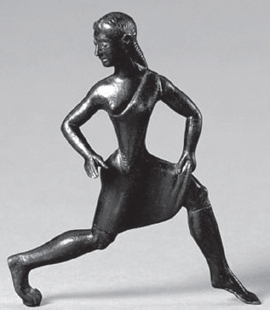

The second of the Spartan women featured in this book is Gorgo. We don’t know much about her, but like Aspasia the fact we know about her at all speaks volumes.
Daughter of Cleomenes I, King of Sparta, she would have been raised at her father’s court and been accomplished in singing and dancing. Spartan women had a much better deal than their Athenian counterparts. They had greater freedoms, could have an education and own land. They didn’t usually marry until they were between 18 and 20 years old and they could inherit.
Gorgo married her father’s half-brother (making him her half-uncle) King Leonidas I. Together they had a son, Pleistarchus, co-King of Sparta from 480 BC to his death in 458 BC. According to Plutarch, ‘When asked by a woman from Attica, “Why are you Spartan women the only ones who can rule men?”, she said: “Because we are also the only ones who give birth to men.”’
According to Herodotus, Gorgo was born either in 518 or 508 BC; we don’t know when she died but it’s likely she had married Leonidas by 490 BC and was still alive when he died at Thermopylae in 480 BC alongside his famous and, if Hollywood is anything to go by, incredibly fit 300 warriors.
Wise and politically astute, both her father and her husband took her advice on board. That Herodotus mentions her being present at her father’s diplomatic meetings is even more extraordinary considering she was female. She outsmarted the Persians by working out a secret code sent on a writing tablet (not the Apple or MacBook variety) that had been cleverly covered with melted wax.
She must have indeed been a great woman of note, although after her husband’s death, she disappears from history. Just think how many women like Gorgo lived – but died in obscurity and we know nothing of them.